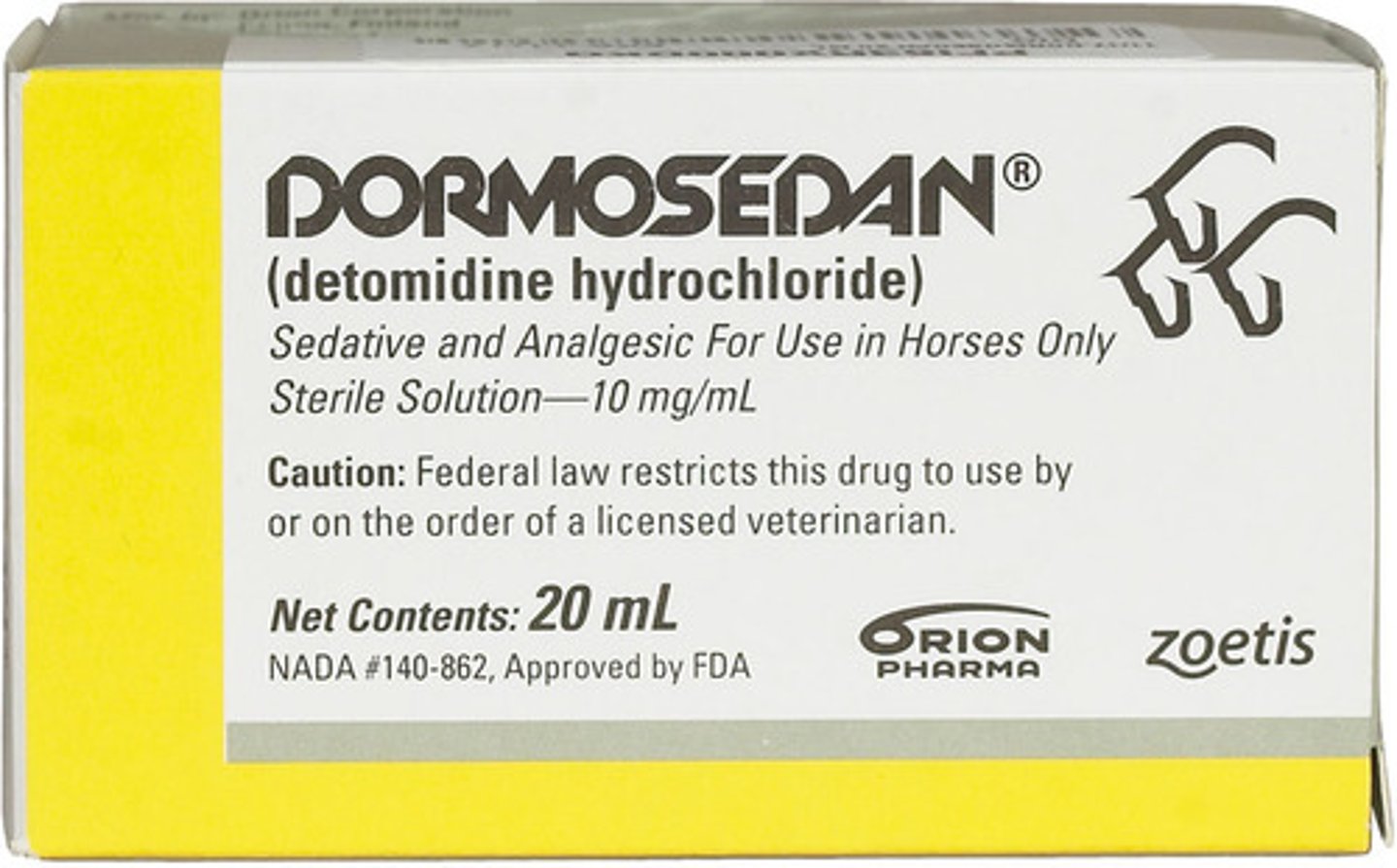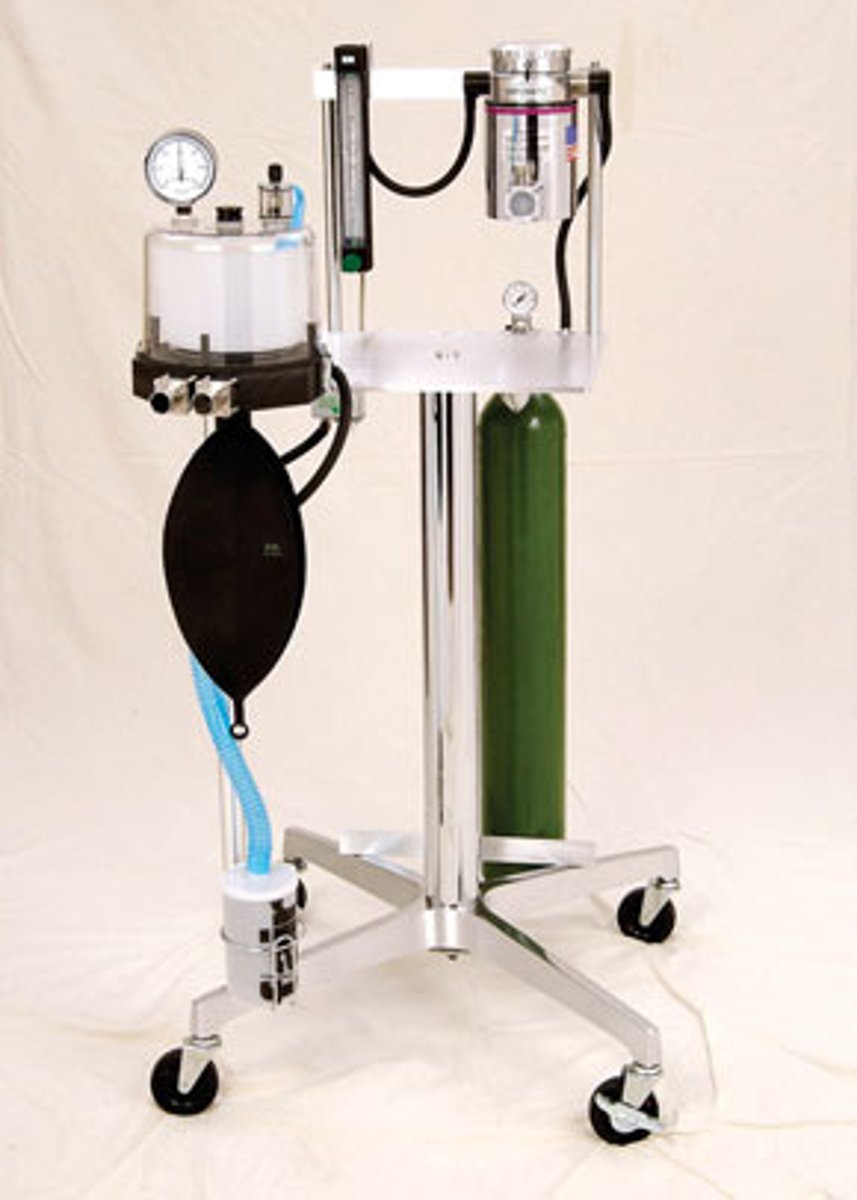Anesthesia - Quiz 2
1/74
There's no tags or description
Looks like no tags are added yet.
Name | Mastery | Learn | Test | Matching | Spaced |
|---|
No study sessions yet.
75 Terms
Flow Rate: Adult Breathing System
20-40ml/kg/min
Flow Rate: Non-Rebreathing System
150-250ml/kg/min
3 classes of drugs for preanesthetic meds
Anticholinergics, Tranquilizers, Opioids
What are the purposes for preanesthetic meds?
-to calm or sedate
-Minimize adverse effects
-Reduce required dose of concurrently administered agents
-Produce smoother inductions and recoveries
-Decrease pain and discomfort
-Produce muscle relaxation
3 types of tranquilizers
- Phenothiazines
• Benzodiazepines
• Alpha 2 - adrenergic agonists
What are the reasons to calm or sedate a patient before induction?
-Potential to have a very excited, frightened, or vicious patient
-Enhances comfort
-Sedation
-Reduces anxiety
-Simplifies patient restraint
-Keep personnel safe
How to produce smoother inductions and recovery?
- During induction and recovery, patients pass through phase II excitement*
• Can be dangerous to themselves and personnel*
• Be prepared *
• Be knowledgeable
Decreasing pain and discomfort
-Important to decrease pain and discomfort before, during, and after each procedure
-Adjuncts must be given to provide the necessary level of analgesia
When should be produce muscle relaxation?
During ocular procedures and orthopedic procedures
SQ administration
slowest onset, longest duration
IM administration
-somewhat faster onset and shorter duration than SC
-Excitement or stimulation can override the effects of the agents
IV administration
-rapid onset, shorter duration than IM or SC
-potency and potential adverse effects increase
Anticholinergics
-Commonly used to prevent and treat bradycardia
-Decreases salivary secretions
-Noncontrolled
Most common agents used in anticholinergics:
Atropine and Glycopyrrolate
Atropine
-after IM injection – acts in 5 min – reaches peak effect in 10-20 min
• Duration of action– 60-90 minutes
Glycopyrrolate
-after IM injection - similar onset – reaches peak effect in 30-45 min
• Duration of action 2-3 hours
What effects do Anticholinergics have on the resp system?
-Reduction and thickening of respiratory and salivary secretions
-production of thick mucous within the airways
-May predispose the patient to airway occlusion
What are the adverse effects of Anticholinergics?
-Mydriasis- CSF tap
-Reduces GI motility
-Reduces lacrimal secretions
What drug is better choice for emergency treatment for bradycardia/cardiopulmonary arrest because of its faster onset of action?
Atropine
What drug is slightly less likely to induce cardiac arrhythmias?
Glycopyrrolate
Phenothiazine tranquilizers
-Protect against cardiac arrhythmias by protecting the myocardium against adrenaline (epinephrine)– induced fibrillation
-Acepromazine
-Noncontrolled
-Water soluble
• Antiemetics
• Histamine blockade
Benzodiazepine tranquilizers
-Can produce vomiting
• Good Muscle relaxant
Phenothiazine effects on the resp system
-does not cause significant respiratory depression
-drug of choice for patient in respiratory distress without other debilitating factors
When do we NOT use phenothiazines?
in patients undergoing allergy testing
Which dogs are very sensitive to acepromazine?
Giant breed dogs- greyhounds- and boxers
Benzodiazepines
-minor tranquilizers
-Most often used in combination with other agents for their muscle relaxant and anticonvulsant properties
-May cause dysphoria
-Diazepam, zolazepam, and midazolam are most commonly used
-
List the three drug classes used as pre-anesthetic medications.
Anticholinergics, Tranquilizers, and Opioids
Anticholinergics such as Atropine and Glycopyrrolate are used to treat ____________ and ___________ salivary secretions?
Bradycardia and decrease
Which classes of tranquilizers can cause penile prolapse in equine?
Phenothiazines
The reversal Flumazenil is the reversal (antagonist) of which tranquilizer class?
Benzodiazepines
What is currently the most commonly used alpha 2 agonist in small animal medicine?
Dexmedetomidine
Detomidine
-Used in horses to provide sedation, analgesia, and muscle relaxation
-Commonly given with butorphanol to produce standing sedation
-Used to provide analgesia for colic pain

Alpha 2 antagonists
yohimbine, tolazoline, atipamezole
Yohimbine and tolazoline are used to reverse what in dogs, cats, ruminants, horses, and exotic species?
xylazine
Atipamezole is used to reverse the effects of what in dogs, cats, and exotic species?
dexmedetomidine
What are the TWO most used halogenated compounds?
Isoflurane and Sevoflurane
True or False. The rate of diffusion is controlled by the concentration gradient between the alveolus and the bloodstream.
TRUE
Isoflurane has a ________ partition coefficient and Sevoflurane has a __________ coefficient.
HIGHER; LOW
List four reasons the MAC might vary
-Age
-Metabolic activity
-Body temperature
-Drugs/Adjuncts used
What are the most common inhalant MACs to know?
Isoflurane: 1.3%
Sevoflurane: 2.4%
An inhalant with LOW partition coefficient is LESS soluble. Please explain what is means for an inhalant to be less soluble.
-Faster induction and recovery
- Amount of inhalant in the alveoli will remain high, so the concentration will be wide
- This causes inhalant to enter and leave the bloodstream at a rapid rate
What is known to be the drug of choice for patients in respiratory distress without other debilitating factors?
Phenothiazines
Alpha 2 agonist effects on resp system
-resp depression (esp in ruminants)
-Brachycephalic dogs and horses with upper respiratory obstruction may become dyspneic
-can significantly decrease tidal volume and respiratory rate
Commonly used opioids include- agonists:
-Morphine
• Hydromorphone
• Oxymorphone
• Fentanyl
Opioid partial agonist drug
Buprenorphine
Opioid Agonist-antagonists drug
butorphanol
Opioid antagonist drug
Naloxone
What are the best drugs available for moderate and severe pain?
opioids
Opioid duration of action
0.5-3 hours
Can opioids cause bradycardia?
YES
Opioid effects on resp system
-Some dogs pant after administration due to the direct effect on the thermoregulatory center of the brain
-Can cause significant respiratory depression when given in higher doses or when used in conjunction with other agents that also cause respiratory depression
Opioids can cause _________ in dogs and ________ in cats, ruminants, and horses.
miosis (constriction) and mydriasis (dilation)
What is a great pre-med for high-risk patients and is used to prevent and treat pre- and post-op pain?
opioids
Neuroleptanalgesia
profound sedation and analgesia induced by the administration of an opioid and tranquilizer
What is Neuroleptanalgesia commonly used for?
procedures that require significant CNS depression and analgesia but not general anesthesia (FNA-Small biopsy)
What is one distinct advantage of using opioids?
their reversibility
Halogenated agents
-volatile substances transported to the patient by a carrier gas (oxygen)
-Stored in vaporizer and evaporate in the oxygen that flows through the vaporizer

Blood-gas partition coefficient
-measure of solubility
-the ratio of the concentration of an inhaled agent in the blood and in the alveolar gas
Low MAC= ________ potency
HIGH
High MAC= _____ potency
LOW
Minimum Alveolar Concentration (MAC)
-the lowest concentration at which 50% of patients show no response to painful stimuli
-Helps determine average vaporizer setting for a procedure
Isoflurane MAC value
1.3%
Sevoflurane MAC value
2.4%
Which is more potent and has a higher solubility........Isoflurane or Sevoflurane?
Isoflurane
Which of the following is an example of a halogenated liquid anesthetic?
Isoflurane
Which inhalant is the LEAST soluble of the following?
Sevoflurane
Which of the following is NOT a side effect of inhalant anesthetics?
Vasoconstriction (hypertension)
What type of drug is Atropine?
Anticholinergic
What type of opioid is fentanyl?
mu agonist
Which of the following drugs is a phenothiazine?
Acepromazine
After IV administration of this class of drug may induce significant peripheral vasoconstriction and reflex bradycardia.
Alpha 2 adrenergic agonist
What reflex should you wait to see before extubating your patient?
swallow
What is the tidal volume range for a 25kg pt?
250-375ml
This disease process is defined as thickening of the cardiac muscle leading to stiffening and failure of relaxation and adequate filling
HCM; hypertrophic cardiomyopathy
Which anesthetic drugs are ruminants extremely sensitive to?
xylazine